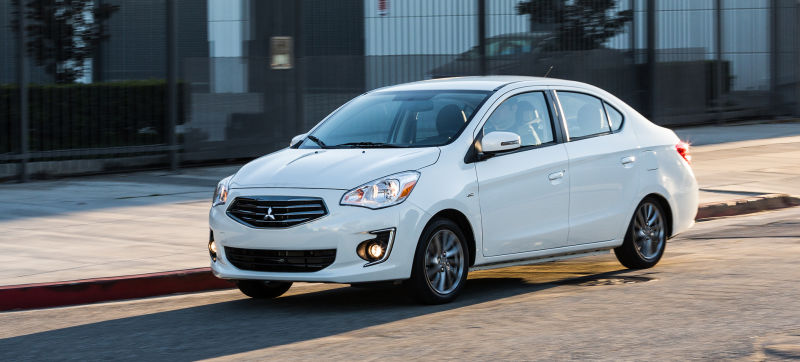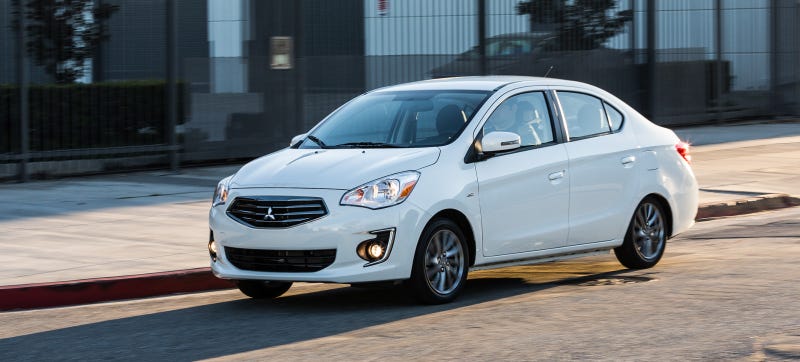
Are you the fine makers of a small, practical hatchback automobile? Do you feel the need to tack on a stubby little trunk for said car to appeal to the hatch-averse American market? Let me stop you right there, because nothing makes a car look more like a garbage penalty box like an obvious afterthought of a trunk.
This sort of thing—most recently featured on the newly unveiled 2017 Mitsubishi Mirage G4—needs to stop.
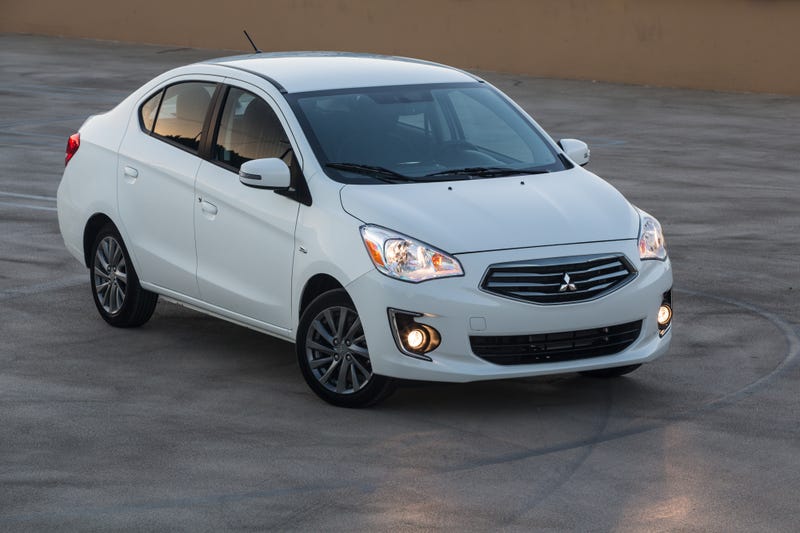
See, I quite like the Mirage. It’s a good, honest little city car: low on tech but high on big, dopey grins as you tripod around every corner. It’s teeny. It’s on hilariously narrow tires for added tossability. You can cram it into nearly anywhere, as even the oldest, most cramped parking areas were designed for cars bigger than Mitsu’s happy little subcompact. It’s kind of brilliant in that “why does no one make a simple car like this anymore?” sort of way.
Advertisement
Absolutely nothing about the Mirage would be improved by adding an ungainly hunch of a trunk on its back end. Sure, a trunk provides a larger and better separated cargo space, but that really only matters if you regularly use your trunk to transport recently deceased foes to the local hog farm, or perhaps haul large quantities of sliced durian. Your normal-smelling everyday groceries will be just fine under the Mirage’s flimsy but functional interior hatch cover.

Cars like the Mirage actually get a bit worse in sedan form. First off, the Mirage G4 grows a whole 20.1 inches in overall length and 3.9 inches in wheelbase over its hatchback counterpart. Admittedly, the longer wheelbase should improve the rear legroom, but that’s a big increase in overhang alone, which will inevitably lessen the Mirage’s miraculous ability to cram into the smallest spaces. You may even (gasp!) need to use a backup camera, which you certainly don’t in the little hatch.
Sponsored
Unsurprisingly, the G4 has also grown a little in curb weight, with the CVT ES G4 gaining 99 lbs over the CVT ES hatchback. There’s a difference in 88 lbs between the two manual ES models, too. The sedan will still have the same 78 horsepower powertrain as the hatch, and thus, no bump in power to tote the extra heft. We haven’t driven it yet, but it’s a safe bet that the G4 won’t be as fun to drive because of the worsened power-to-weight ratio alone.

Even the Mirage hatchback’s bright, open greenhouse has gotten lost in translation, too, because now you have a trunk and an angled rear roofline behind you. The D-pillar appears to have been made extra thick out of spite, completely breaking with the open feel of the front of the car. It looks more closed-in than the hatchback, and just doesn’t look like a nice place to sit.
The taller expanse of metal in the back of the Mirage G4 plays a cruel visual trick on the small rear wheels, which already looked tiny on the hatchback. Here, they almost look smaller than the front wheels from certain angles due to the difference between the front design carried over from the hatchback and the new extra-thick rear of the car.
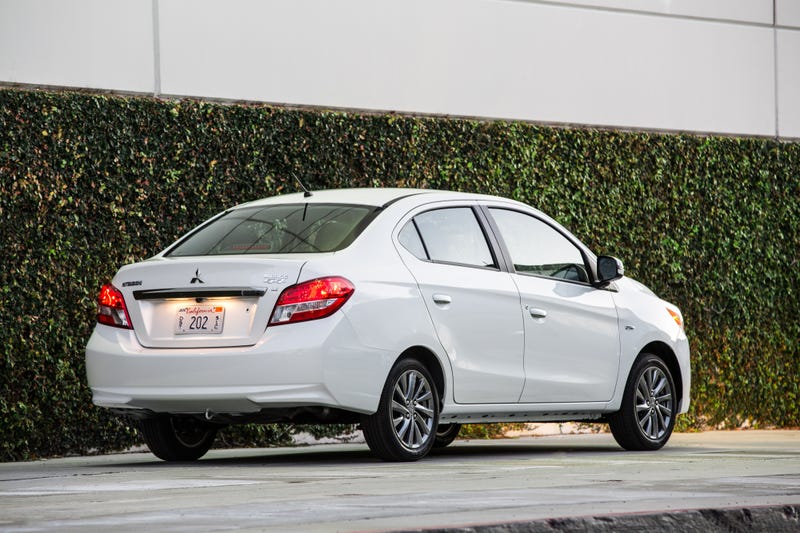
Everything about the Mirage G4 sedan screams “we designed a nice small car, and then compromised it with this tumor on its butt.” It looks cheap, which is a huge step backwards on the nicely upgraded design of the 2017 Mirage hatchback.
Advertisement
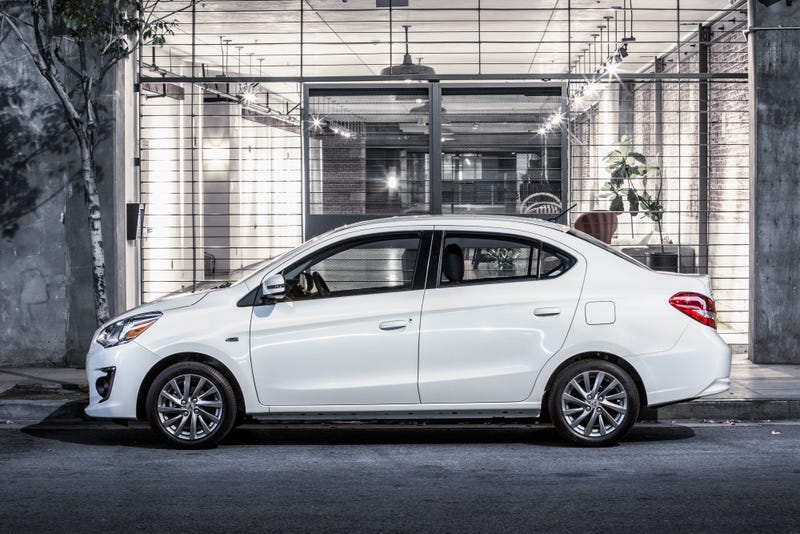
If you’d like to argue that this is just a Mitsubishi problem because Mitsubishi is the too-broke punching bag of the automotive landscape, au contraire.
The old blobby Toyota Yaris sedan was the epitome of “You bought this from Enterprise, didn’t you?” uncool, and the 2009+ Ford Fiesta sedan was the most visually offensive rear end to hit the market in years. Those are two of the largest, most successful car companies on the planet, yet they still couldn’t figure out how to make a good looking sedan version of their subcompact hatchbacks.

I even thought about getting a Fiesta when I ended up with my Lancer. Fiestas do rallies! Ken Block had just gotten [a heavily modified] one! It comes in snot green! Problem was, the only Fiesta available nearby was the awful looking sedan, and I couldn’t fathom why anyone would tack on a peculiar growth of a trunk so high up on that poor car’s back. That poorly designed trunk was the ultimate deal-breaker on an otherwise neat car.
Here’s a suggestion to automakers everywhere: stop doing this.
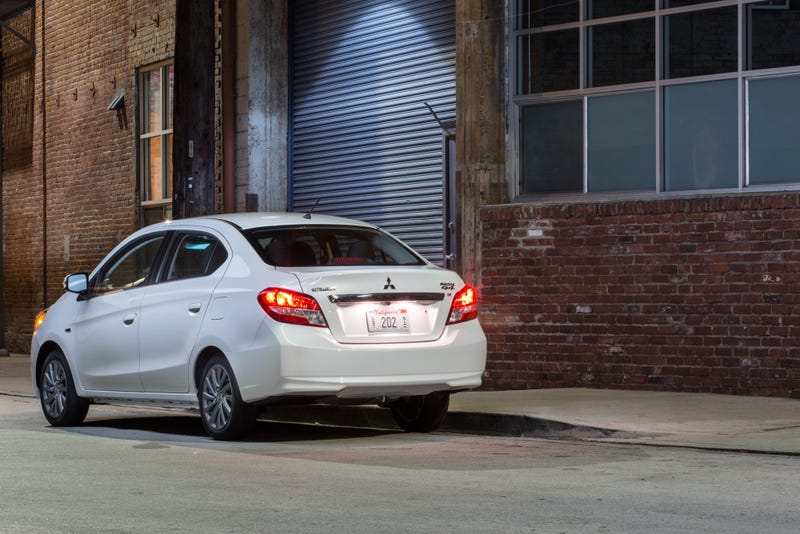
If, for some reason, the design of your hatchback is such that adding a trunk either forces it to follow a highly angled beltline to somewhere above where a trunk should logically be, or forces said trunk to break with the flow of the rest of the car in a bizarre, inorganic fashion—don’t make a sedan version. Wait until the next generation if you’d really like a trunk and design that next-gen car from the ground-up to feature America’s most common cargo space, but don’t ruin a good hatchback design in the meantime.
It’s just unnecessary to add an ugly trunk in this day and age. If you make a desirable car, buyers seem to be down with the taller, shorter cargo compartment of a hatchback. Hatch covers hide stuff just as well as trunk lids do anymore, so there’s hardly a difference in functionality.
Good hatchbacks also sell. The hatch-tastic ST models of the Focus and Fiesta seem to be the unofficial cars of OppositeLock, for example. They’re angry little egg-cars, and they’re great. Let’s also not forget that the bane of left lanes everywhere—the Toyota Prius—still waves that glass hatchback freak flag high.
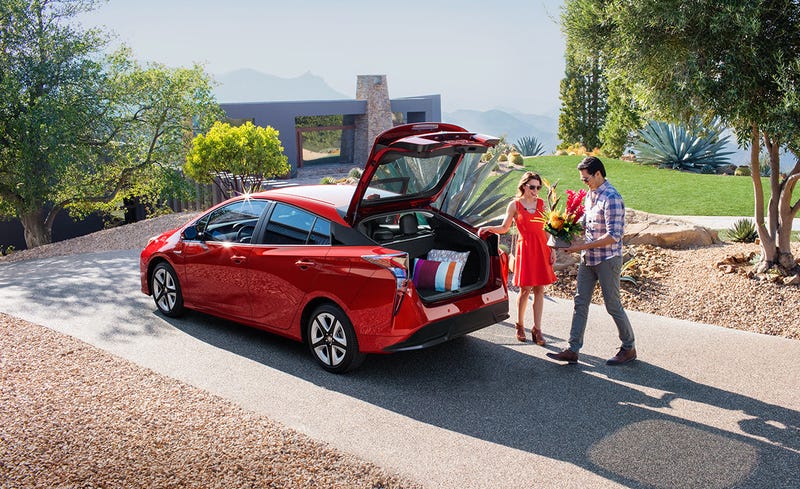
There are examples out there that prove that trunks don’t always have to look awful on small cars. Older Mitsubishi Colts and Mirages, for example, wore their cargo spaces well—lower, and sleeker—despite also coming in a shorter hatchback form.
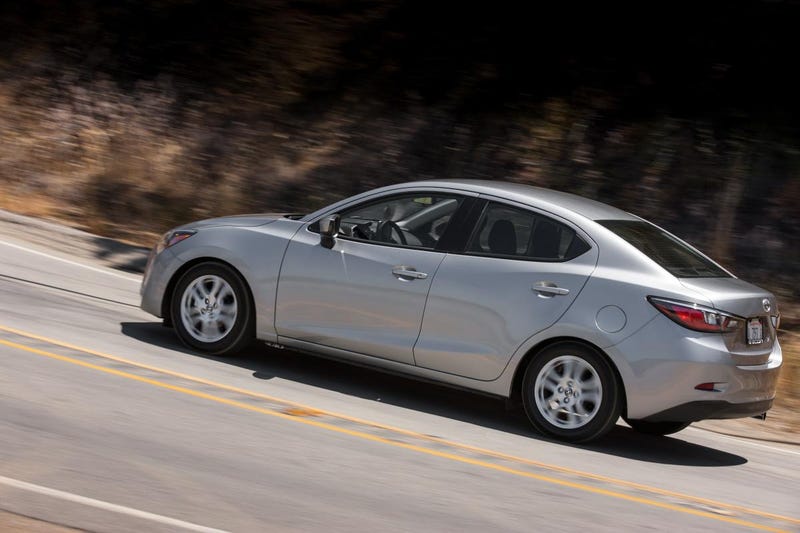
For a more recent example, look no further than the Scion iA (itself a Mazda2 rebadge). The trunk flows nicely into the curve over the rear half of the car, which mirrors the curvature of the taillights. The resulting rear-end design doesn’t look like an afterthought in the slightest.
The point is this: when you have a variant of a car that just looks cheap and sad, it can affect the whole image of your company, especially if you have limited offerings (and thus, limited visibility) in a market. Nothing looks cheaper than failing to design a nicely integrated trunk.
Unfortunately for Mitsubishi, there’s nothing that could do more damage to their attempt to climb out of their also-ran hole than a car that looks like a rolling penalty box. So far, the inexpensive Mirage has been the marque’s savior, pumping new life into their sales figures. Why would they blow it by releasing an uglied-up one with a horrendous looking badonkadonk?
Just because a car is small and its potential buyers are thrifty doesn’t mean its owners are blind. Stop putting stubby, hideous trunks on tiny cars.

